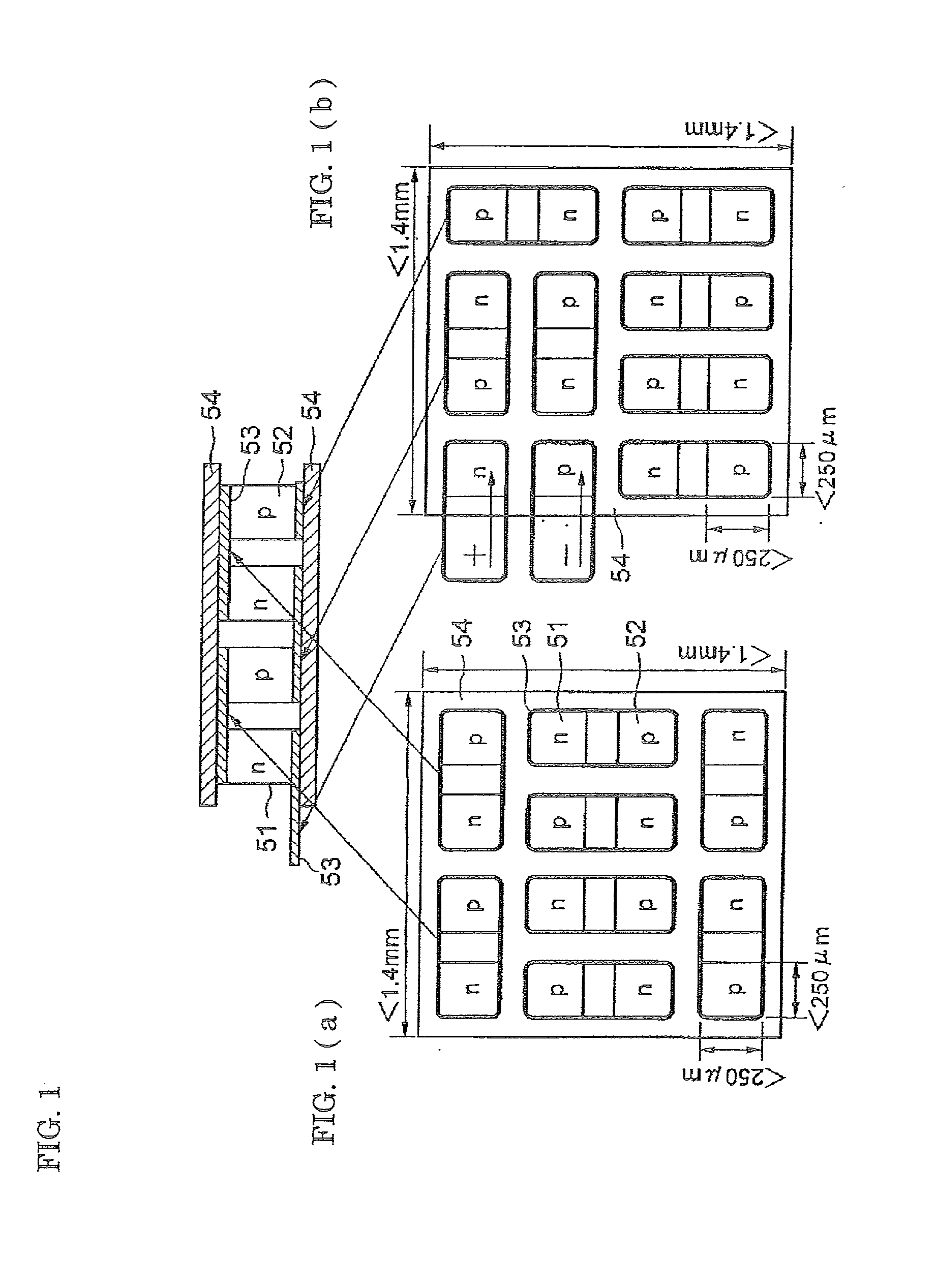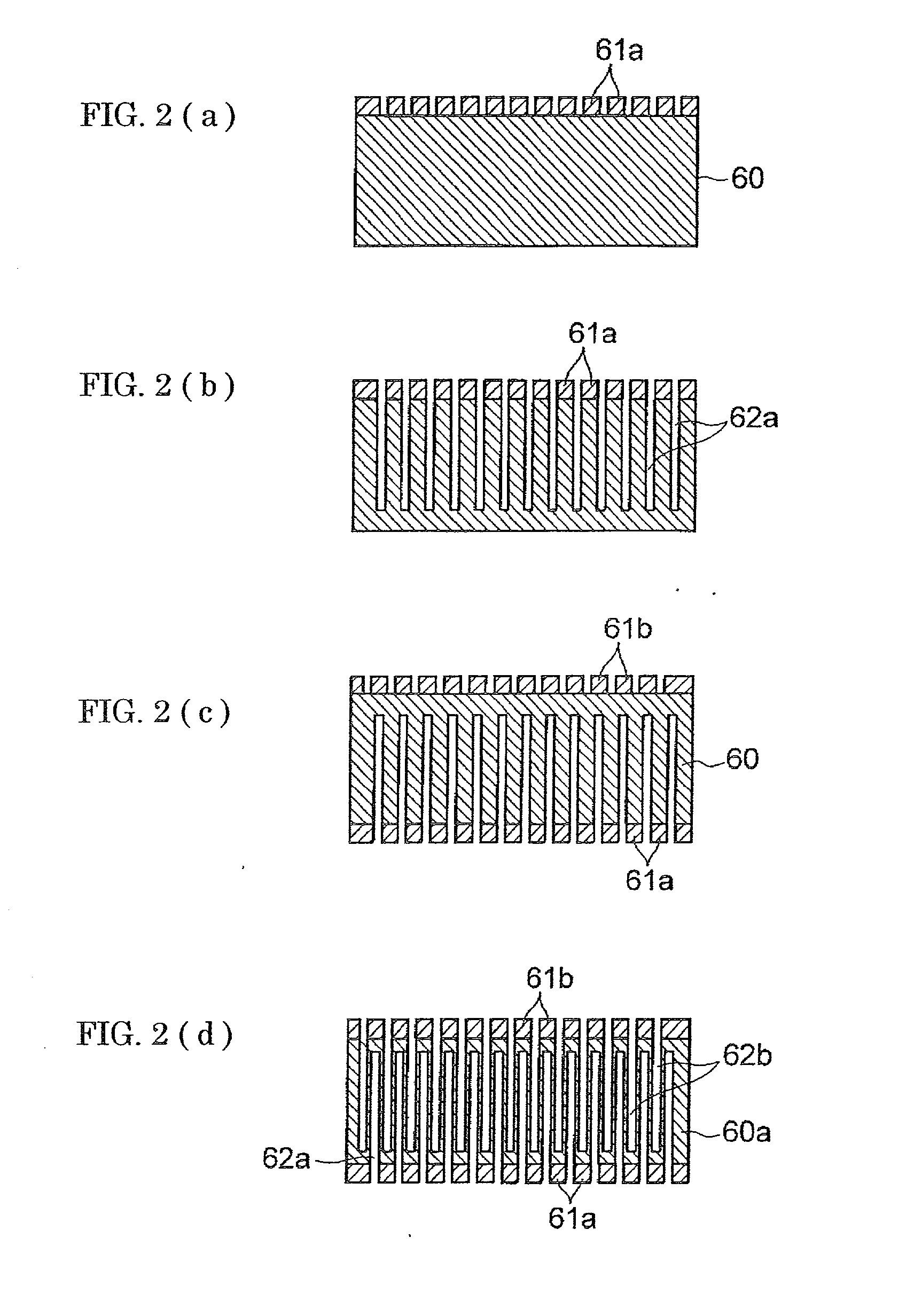Thermoelectric device and optical module made with the device and method for producing them
a technology of thermoelectric devices and optical modules, which is applied in the manufacture/treatment of thermoelectric devices, semiconductor devices, and semiconductor devices. it can solve the problems of difficult to obtain a size less than 500 .mu.m, insufficient limitation of thermoelectric devices a in reducing the size, and material allowed
- Summary
- Abstract
- Description
- Claims
- Application Information
AI Technical Summary
Problems solved by technology
Method used
Image
Examples
Embodiment Construction
(1) Production of Mold for Forming Thermoelectric Elements
[0105] As shown in FIG. 2(a), an Si wafer having a thickness of 600 .mu.m was prepared as a base material 60. A photoresist pattern 61a made of an organic substance was formed on the front side of the Si wafer by photolithography. Small holes formed in the photoresist 61a had the shape of a square. As shown in FIG. 2(b), only the front side of the base material 60 was treated by reactive-ion etching using SF.sub.6 as an Si-reactive ion gas and C.sub.4F.sub.8 as a protective gas for the walls of the small holes. This treatment formed quadrangular prism-shaped small holes 62a, each having a square cross section with a side length of 40 .mu.m and a depth of 500 .mu.m, regularly arranged in the X and Y directions with a pitch of 120 .mu.m.
[0106] A gas to be used for the reactive-ion etching of the base material has only to be capable of etching it. In the case of an Si base material, not only SF.sub.6 but also other reactive ion ...
PUM
 Login to View More
Login to View More Abstract
Description
Claims
Application Information
 Login to View More
Login to View More - R&D
- Intellectual Property
- Life Sciences
- Materials
- Tech Scout
- Unparalleled Data Quality
- Higher Quality Content
- 60% Fewer Hallucinations
Browse by: Latest US Patents, China's latest patents, Technical Efficacy Thesaurus, Application Domain, Technology Topic, Popular Technical Reports.
© 2025 PatSnap. All rights reserved.Legal|Privacy policy|Modern Slavery Act Transparency Statement|Sitemap|About US| Contact US: help@patsnap.com



